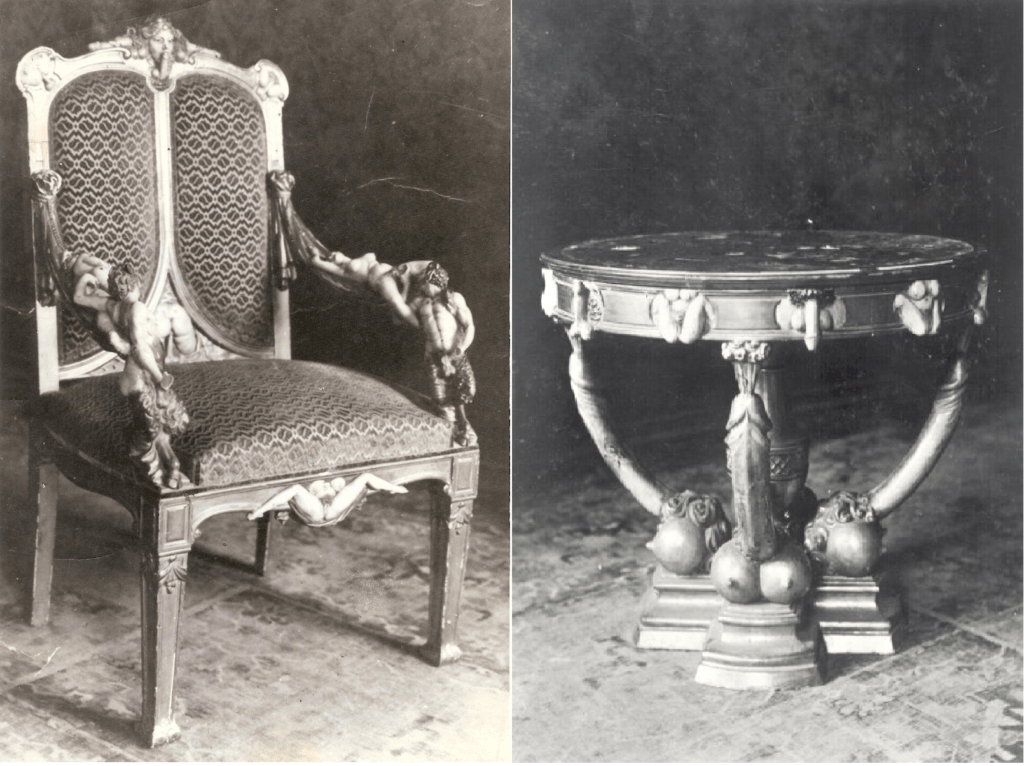Table of Contents
Introduction
Catherine the Great, one of Russia’s most influential rulers, had an undeniable flair for culture and art which prominently reflected in her collection of furniture. Her reign, from 1762 to 1796, was marked by an era of enlightenment and expansion that extended to the arts and the opulent interiors of her palaces. This blog post delves into the rich history and exquisite craftsmanship of Catherine the Great’s furniture, a testament to her legacy as a patron of the arts and a leader with refined taste. Through this exploration, we will uncover the significance of each piece and how they contributed not just to Russian art but to the culture of an era that still fascinates historians and art enthusiasts alike.
The Historical Significance of Catherine the Great’s Furniture
Catherine the Incomparable rose to the lofty position in the midst of a period rich with social trades and creative thriving in Russia. Her rule is frequently associated with the significant changes she presented, which stretched out past legislative issues to impact the Russian tasteful and social scene. Furniture during her time was a utility as well as a significant assertion of extravagance, power, and imaginative taste.
The furniture authorized and gathered by Catherine was dominatingly motivated by Western European plans, particularly the unpredictable styles of the French Elaborate and arising Neoclassicism. These pieces were something other than part of the style; they represented the change in Russian tip top culture towards a more complex, European-impacted ethos. Catherine’s own contribution in the determination and plan of the furniture guaranteed that each piece mirrored her vision of a modernized Russia.
Besides, the furniture of Catherine’s time filled a double need — it was both practical and a material for the period’s best specialists to exhibit their abilities. The fancy subtleties in marquetry, the rich utilization of overlaid bronze, and the joining of extraordinary woods and textures discussed a ruler who was an epicurean of workmanship as a her well as a specialist castle insides to dazzle and impact unfamiliar dignitaries and her own retainers the same.
The tradition of Catherine’s desire for furniture keeps on being a subject of study and profound respect in gallery assortments across the globe, filling in as an extension between the at various times comprehension of social richness and imaginativeness.
The Style and Craftsmanship of the Empress’ Furniture
Catherine the Incomparable’s period was set apart by a particular mix of Elaborate and Neoclassical styles, which mirrored the ongoing European imaginative patterns as well as her own inclination for magnificence and detail. The furniture pieces from her rule are portrayed by their intricate plans, many-sided trims, and broad utilization of plated components that complement their extravagant allure.
Extravagant Impact: This style is known for its sensational, nitty gritty, and exceptionally elaborate highlights. Furniture pieces in this style frequently included bended structures, striking ornamentation, and a solid feeling of development. Catherine’s assortment included many such pieces that highlighted elaborate wood carvings and were embellished with gold leaf, flaunting the craftsmanship of her time.
Neoclassical Class: Later in her rule, as Neoclassicism acquired conspicuousness, the furniture began reflecting more balance and effortlessness contrasted with the Extravagant’s intricacy. This style was propelled by the traditional ideal of antiquated Greece and Rome, underscoring beauty and controlled class. Pieces frequently displayed tightened legs, straight lines, and frieze-like beautifications utilizing old style themes like shrubs and emblems.
The experts liable for making these works of art were frequently enrolled from across Europe, carrying with them a different scope of abilities and procedures. This included decorate work utilizing fascinating woods, definite marquetry, and the incorporation of porcelain and ormolu (a kind of overlaid bronze) into the woodwork, making each piece an independent craftsmanship.
These furniture pieces were for use as well as were additionally intended to be ice breakers and images of abundance and power. They were put in unmistakable areas around Catherine’s numerous castles, each recounting a story or mirroring a subject that was of high repute to the Sovereign.
This mix of creative styles and the elevated degree of craftsmanship exemplified the advantage of Catherine’s court as well as set a norm for furniture making that impacted ages to come.
Notable Pieces of Catherine the Great’s Furniture Collection
Among the vast and varied collection of furniture that graced the halls and rooms of catherine the great’s furniture, several pieces stand out for their artistic merit and historical significance. These items not only reflect the personal taste of Catherine but also serve as a showcase of the pinnacle of 18th-century craftsmanship.
The Orlov Service Table: One of the most famous pieces associated with catherine the great’s furniture is the Orlov Service Table, named after one of her closest advisors, Grigory Orlov. This magnificent table is adorned with intricate marquetry and gilded bronze, featuring motifs that symbolize the power and glory of the Russian Empire. The detailed craftsmanship and luxurious materials used in this table make it a quintessential example of the opulence of her reign.
Catherine’s Personal Desk: Another iconic item is Catherine’s own desk, where she reportedly spent many hours working on state affairs. This desk is a masterpiece of Neoclassical design, with clean lines and functional elegance, decorated with polished wood inlaid with gold and ivory. It not only served a practical purpose but was also a symbol of her intellectual pursuits and her role as an enlightened ruler.
The Amber Room Panels: Although not furniture in the traditional sense, the Amber Room’s decorative panels are worthy of mention. Originally a chamber decorated in amber panels backed with gold leaf and mirrors, it was a unique artistic endeavor that has been called the eighth wonder of the world. The panels were a gift to Peter the Great but were completed during Catherine’s reign, showcasing her appreciation for extravagant and unique artistic creations.
These pieces and others in her collection were not merely items of everyday use but were artworks that exemplified the cultural and aesthetic ideals of her time. They remain highly valued by historians and collectors alike, preserved in museums where they continue to draw the admiration of visitors from around the world.
The Role of Catherine’s Furniture in Modern Interior Design
catherine the great’s furniture the Incomparable’s impact on furniture configuration reaches out past her lifetime, reverberating into present day inside plan drifts that embrace both the extravagance of Ornate and the spotless lines of Neoclassicism. Her capacity to mix these styles so flawlessly gives a rich wellspring of motivation for contemporary originators hoping to infuse a feeling of extravagance and verifiable profundity into their spaces.
Consolidating Florid Components: Present day fashioners frequently draw upon the Rococo’s adoration for show and detail to make central focuses in a room. For instance, a Rococo roused fancy mirror or a lavishly cut console table can add a sensational pizazz to a generally moderate space, giving a differentiation that is both striking and amicable.
Neoclassical Impacts: The Neoclassical style, known for its evenness and utilization of traditional themes, has an immortal allure that fits well with present day preferences. Furniture pieces that copy catherine the great’s furniture, like seats with straight lines and tightened legs, or tables with spotless, mathematical shapes, can bring a component of complexity and request to contemporary insides.
Tips for Modern Applications:
- Mix and Match: One of the keys to using historical styles like those favored by catherine the great’s furniture is to blend them with modern elements. A Neoclassical desk could be paired with a modern ergonomic chair, combining functional modernity with classic aesthetics.
- Statement Pieces: Choose one or two pieces of furniture as the room’s centerpiece, much like how catherine the great’s furniture displayed her most ornate items. This approach can prevent the space from feeling overwhelmed while still showcasing the grandeur of the designs.
- Subtle References: Use smaller decor items like cushions, lamps, or rugs that feature Baroque or Neoclassical patterns to subtly integrate these styles into a modern setting without overpowering it.
Through these methods, catherine the great’s furniture design not only enriches the aesthetic of a space but also brings a narrative of historical significance and cultural sophistication. Her influence proves that good design transcends time, continuously finding new expressions and relevance in changing environments.
Preserving Catherine the Great’s Legacy Through Her Furniture
The protection of catherine the great’s furniture isn’t just about keeping up with actual things yet in addition about shielding a piece of social history. These relics give a window into the past, exhibiting the craftsmanship, creative inclinations, and, surprisingly, the individual preferences of perhaps of Russia’s most famous ruler. Endeavors to save these things are essential for instructive and social conservation, permitting people in the future to appreciate and gain from them.
Historical center Shows: A significant number of catherine the great’s furniture pieces are housed in exhibition halls like the Isolation Gallery in St. Petersburg, Russia. These establishments assume a basic part in the protection cycle, utilizing preservation methods that guarantee the life span of these pieces while making them open to the general population. The exhibition halls additionally give setting to the things, assisting guests with grasping their authentic and creative importance.
Reclamation Difficulties: The rebuilding of catherine the great’s furniture includes careful craftsmanship and a profound comprehension of verifiable materials and methods. Restorers frequently face difficulties like matching the first materials or mirroring age-old strategies to keep up with the legitimacy of each piece. The objective is to reestablish these things to their previous magnificence without undermining their honesty or verifiable worth.
Instructive Projects and Shows: Other than conservation, instructive projects assume an essential part in dispersing information about Catherine’s furnishings. Studios, directed visits, and brief shows are frequently coordinated to highlight specific parts of her assortment. These projects mean to teach the general population about the imaginativeness and verifiable setting of the furnishings, upgrading appreciation for Catherine’s effect on human expression.
Virtual Visits and Advanced Files: In the computerized age, numerous historical centers offer virtual visits or online chronicles that permit worldwide admittance to their assortments. These assets are significant for the people who can’t visit the exhibition halls face to face yet wish to investigate catherine the great’s furniturethe Incomparable’s inheritance from a far distance.
The proceeded with work to save and exhibit catherine the great’s furniture guarantees that her inheritance stays dynamic and available. These endeavors not just honor her memory and her commitments to artistic expression yet in addition move progressing appreciation for verifiable craftsmanship and plan.
With this, we wrap up our investigation of catherine the great’s furniture the Incomparable’s furnishings. We’ve traveled through the authentic importance, the styles and craftsmanship, striking pieces, impact on current plan, and the protection endeavors that keep her inheritance alive. We should close for certain last contemplations.
Conclusion
Catherine the great’s furniture is more than just a collection of antique pieces; it represents a rich tapestry of history, art, and culture that defined an entire era of Russian nobility. Through her exquisite taste and patronage, Catherine not only transformed the interiors of her palaces but also left a lasting imprint on the world of furniture design that continues to inspire and awe. Her legacy in furniture is a testament to her vision of a Russian empire that embraced both the elegance of European artistic styles and the innovation of the modern era.
Catherine the great’s furniture serves as a bridge between the past and the present, offering insight into the life of a powerful ruler who used her influence to foster art and culture. The ongoing efforts to preserve her furniture not only help maintain this connection but also ensure that future generations can share in the beauty and history of her remarkable collection.
Read More : ENRICA CENZATTI







